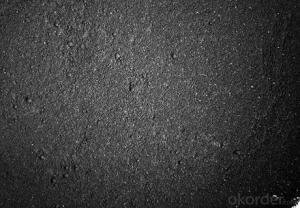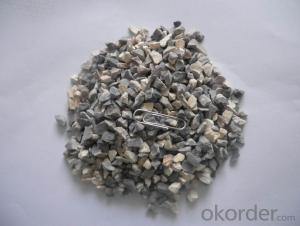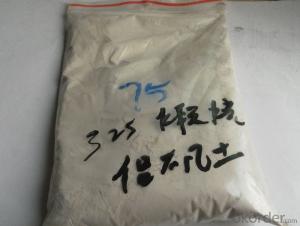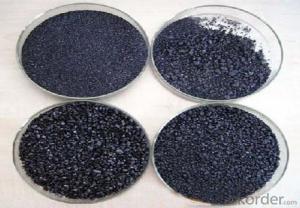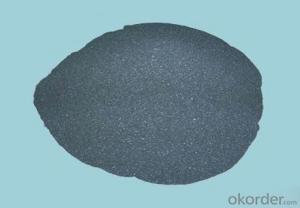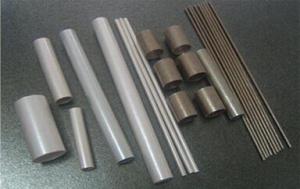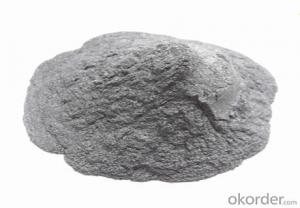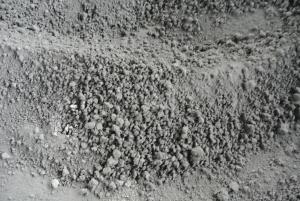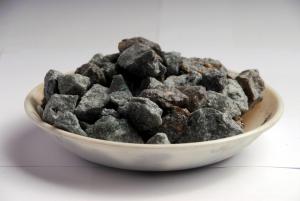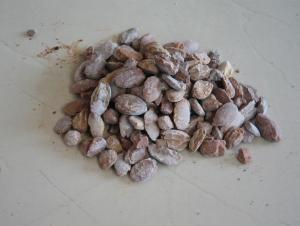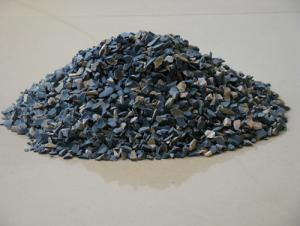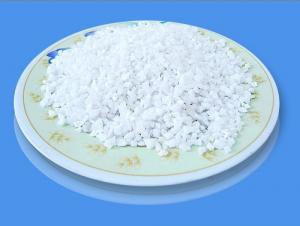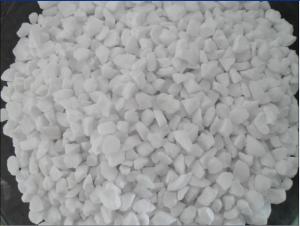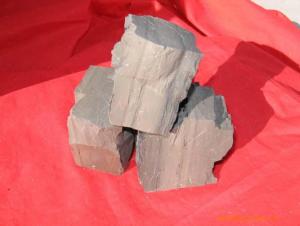Raw Materials for Refractory - Charcoal Materials
- Loading Port:
- Tianjin
- Payment Terms:
- TT OR LC
- Min Order Qty:
- 20 m.t.
- Supply Capability:
- 1000 m.t./month
OKorder Service Pledge
OKorder Financial Service
You Might Also Like
This product is made by smelting finely sorted special-A grade raw magnesite or high purity calcined magnesite grain in electric arc furnace. It features by high purity, big crystalline size, dense structure, good corrosion resistance and thermal shock resistance.
Specification:
Application
It is a good electric insulation material enduring high temperature as well as important material for making high grade magnesia bricks, magnesia carbon bricks and monolithic refractories.
In the same condition, using manganese or silicon to deoxidize separately, the burn out rate are 46% and 37%, but it is only 29% if using manganese alloy to deoxidize. So, it is used widely to smelting steel and its output increases faster than ferroalloy's, so has become an indispensable composite deoxidizing and alloy additives in steel industry. The silicon-manganese which contains carbon below 1.9% still is used to produce medium/low-carbon ferromanganese and semi-finished products of electro silicothermic process manganese metal.
- Q: Preparation of refractory clay
- Is it to make refractories? Add some andalusite to the refractory mortar will improve the effect.
- Q: Which brand of thermal insulating refractory is good?
- The most famous is the dragon, Morgan, Luyang, which are good at making ordinary thermal insulation materials and whose products are cheap but quality. Guangdong ALISON nanometer aerogel is more expensive. The heat conductivity coefficient is 0.018. It can work under 1000℃
- Q: Why does refractory need to add coarse firstly and then add fine aggregate?
- Oh, adding coarse aggregate first is to select good material to make aggregate, and the rest cna be made into fine aggregate. Because if it contains impurities, once being sintered, the appearance will be affected, but fine aggregate does not have this impact.
- Q: What kind of material is refractory fiber?
- Refractory fiber, also known as ceramic fiber, is a fibrous thermal insulation refractory. Refractory fiber, also known as ceramic fiber, is a fibrous thermal insulation refractory. It has the characteristics of ordinary fibers, such as softness, flexibility, having a certain tensile strength. And it can be further processed into a variety of products such as paper, wire, rope, tape, blankets and felts. Besides, it has high temperature resistance and corrosion resistance which ordinary fibers don't have. As a fire retardant and thermal insulated material, it has been widely used in metallurgy, chemical, machinery, building materials, shipbuilding, aviation, aerospace and other industrial sectors.
- Q: Who knows about the fire endurance of sintered shaly hollow bricks?
- 1. after roasting at high temperature of more than 1200 degrees, shale burned bricks in construction works can be free from expanding with heat and contracting with cold. 2. masonry walls can be plastered with no needs of any anti-cracking, reinforcement measures, and walls will not bulge and crack, which can reduce the construction cost, as well as are preferred building materials of frame structural engineering. 3.They have good sound insulation and thermal insulation performances, are one of the green building materials that the state currently promotes. 4. They have high intensity. The average compressive strength of them is up to 15.8, which matches with M7.5 cement mortar that has advantages of low water absorption, and good anti efflorescence performance.
- Q: What are the structural properties of refractory materials provided by the manufacturer of the refractories include?
- For high efficiency continuous casting, molten steel will cause turbulence in tundish because of its fast casting speed. The sharp turbulence, on the one hand, breaks through the slag layer, involves the slag in the molten steel, and exposes the liquid steel to the air. It is oxidized two times;
- Q: What is the appropiate thickness if fire resistant time for ultra thin steel structure coating is 2.5 hours?
- Hello steel structure can adopt surrounding concrete or brick, fireproof coating, fireproof board coating and composite structure for its fire resisitance. Fire resisitance board can be divided into thick fire protection plate and thin plate, the thickness of the plate thickness of the fire is between 20 ~ 50mm, mainly includes calcium silicate fireproof board and expansion boring stone fire board, the main varieties are KB board, CF; thin fireproof plate is between 6 ~ 15mm thick, the main varieties include enforced short fiber cement plate, ordinary enforced fiber silicate calcium board and glass cloth reinforced inorganic board.
- Q: Can anyone say something about what A-level fire-proof decorative material is?
- Now A-level market is very confusing. The major products are material monomer A-level and composite A-level, now a lot of B-level material is wrapped in calcium silicate board. The foam cement overall composite is level A, such as phenolic aldehyde composite, as well as some of the foam paddings, while monomer A-level includes rock wool, ultra-thin insulation panel and the like.. But there are few products with real sound A level qualification. Many manufacturers are playing the edge ball with A-level fire rating examining reports and B-level system detection reports and records, but this situation will not last long, which will soon be clear. I hope the information above can help you. Hope you adopt
- Q: What is glass furnace used high-grade refractory materials?
- Glass furnace need to use refractory that temperature resistance is more than 1600 degrees, corundum mullite brick, etc., What's more, in the key parts of the glass furnace needs to use chromium zirconium corundum material, such as alumina hollow brick and corundum brick.
- Q: What's the fire endurance of A grade fireproof glass curtain wall?
- An hour and a half, an hour, and half an hour. As a key step in the home fire prevention, fire door is particularly important. According to the fire endurance and heat insulation performance, it can be classified as follows: A class fire door with fire endurance of no less than 1.5h; B class fire door with fire endurance of no less than 1h; C class fire door with fire endurance of no less than 0.5h. We can choose according to different needs, while A class fire door and B class fire door are now commonly used. Fire door has great varieties, and the material it uses is also of wide range. It includes stainless steel fire doors, glass fire doors, steel fire doors, etc. The most important feature of fire door is its fire resistance period. The main difference between A class fire door and B class fire door lies in their fire endurance, of which the former is no less than 1.5h, while the latter is no less than 1h. Difference between A class fire door and B class fire door also lies in their fireproofing material. That is the thickness of the built-in fire prevention board, of which A class fire door is 52mm, while B class fire door is 46mm. Therefore A class fire door obtains longer fire resistance period than that of B class fire door and gains better fireproof performance. A class fire door and B class fire door also differ in the places they are used. A class fire door is generally used in important fire fighting access of machine rooms, warehouses and oil depots, etc. and flammable and explosive public places, while B class fire door is generally used in the ordinary fire fighting access of some ordinary buildings. But B class fire door is more widely used than A class fire door.
Send your message to us
Raw Materials for Refractory - Charcoal Materials
- Loading Port:
- Tianjin
- Payment Terms:
- TT OR LC
- Min Order Qty:
- 20 m.t.
- Supply Capability:
- 1000 m.t./month
OKorder Service Pledge
OKorder Financial Service
Similar products
Hot products
Hot Searches
Related keywords
